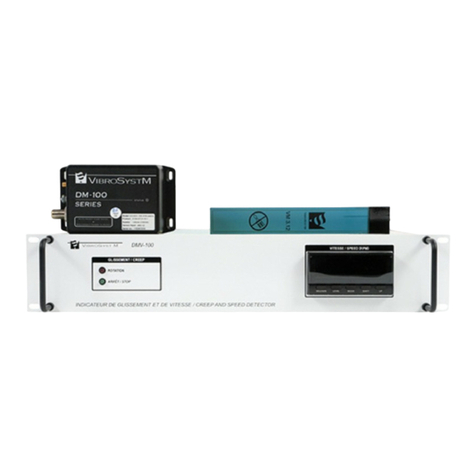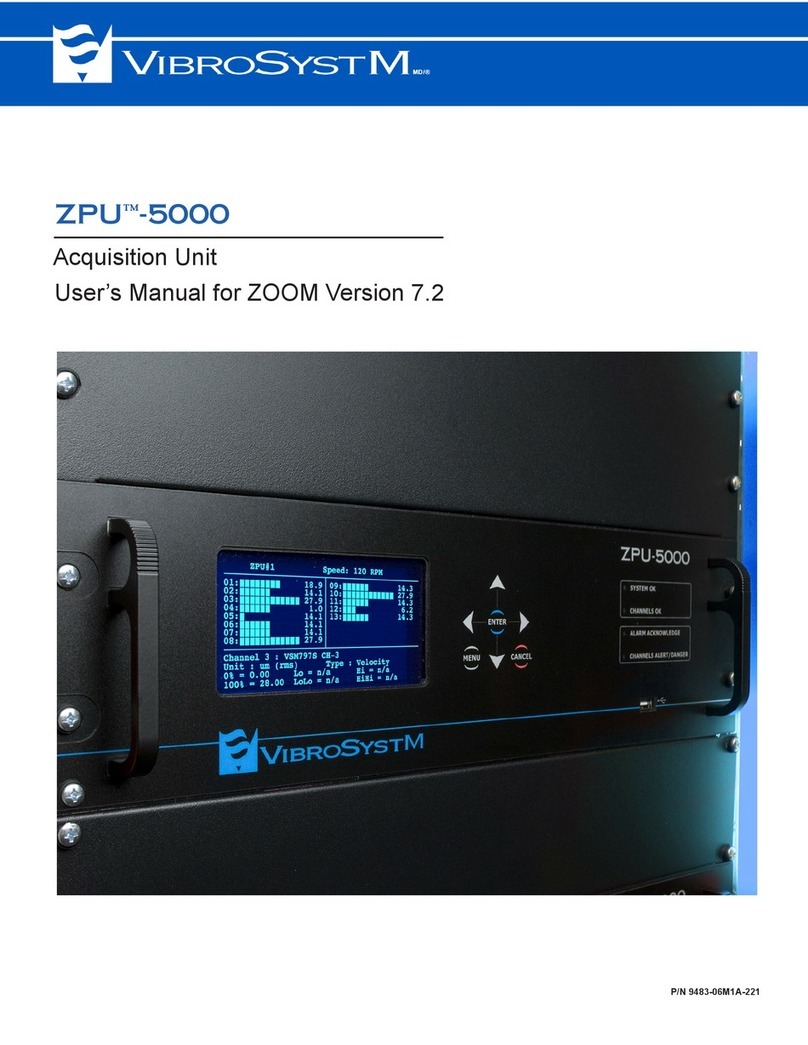
Copyright © VibroSystM Inc., 2006 2
●
797L Piezoelectric Accelerometer and Cable_Installation - Rev. 1
INSTALLATION OF 797L PIEZOELECTRIC ACCELEROMETER AND CABLE
Preliminary considerations
•The 797L piezoelectric accelerometer is a solid-state device
with an isolated piezoceramic sensing element capable of
detecting low to mid-level displacements in the same axis as the
mounting hole on slow to medium speed machines. It contains
no moving parts and can be oriented in any direction.
•Operates under most harsh environmental conditions.
•Unaffected by dirt, oil, and most chemical atmospheres.
•The piezoelectric membrane minimizes the effects of transverse
motion, base strain, and thermal transients.
•The flat frequency response is from 1 Hz to 500 Hz.
•The mounting location must be chosen according to application. Absolute shaft vibration measurement
applications will require that the accelerometer be mounted on the same support structure and in the
same axis as the proximity probe.
•The 797L piezoelectric accelerometer is shipped with a captive screw for stud mounting. In selecting
mounting location, pay attention to accessibility.
•The accelerometer must in most cases directly contact the machine surface.
•The closer the contact is between the accelerometer and the machine, the better the ability to couple and
measure high frequency signals. Best efforts must be made to provide a flat, smooth, and even mounting
surface by spot facing the location. The tapped hole must be perpendicular within 1°to the mounting
surface.
•Avoid mounting the sensor on thin sections or vibration-free areas.
•Excessive mechanical shock from hard impacts can destroy the internal electronic components or
fracture the piezoelectric crystal. Avoid dropping the accelerometer.
If the accelerometer is installed on an insulated bearing, a nonconductive mounting
support must be used to preserve the integrity of insulation.




























